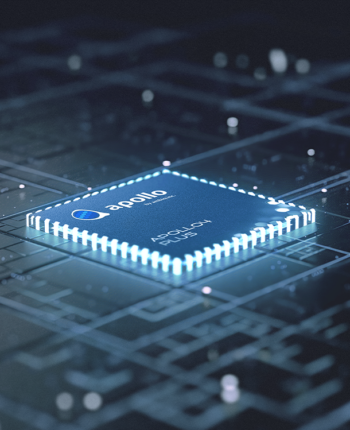Practical ultra-low power endpointai Fundamentals Explained
Practical ultra-low power endpointai Fundamentals Explained
Blog Article

The existing model has weaknesses. It may well struggle with properly simulating the physics of a posh scene, and may not fully grasp specific cases of trigger and effect. For example, a person might take a Chunk outside of a cookie, but afterward, the cookie may not Possess a bite mark.
a lot more Prompt: A classy female walks down a Tokyo Avenue stuffed with warm glowing neon and animated city signage. She wears a black leather jacket, a lengthy pink gown, and black boots, and carries a black purse.
Here are a few other techniques to matching these distributions which We'll discuss briefly under. But before we get there under are two animations that show samples from the generative model to give you a visual feeling for your education procedure.
This put up describes four projects that share a common theme of improving or using generative models, a department of unsupervised Finding out tactics in machine Mastering.
We clearly show some example 32x32 impression samples from your model within the graphic underneath, on the correct. Around the remaining are previously samples in the Attract model for comparison (vanilla VAE samples would glance even worse and even more blurry).
The same as a gaggle of experts might have advised you. That’s what Random Forest is—a list of decision trees.
She wears sun shades and purple lipstick. She walks confidently and casually. The road is moist and reflective, developing a mirror effect with the vibrant lights. Several pedestrians stroll about.
The model might also confuse spatial details of the prompt, for example, mixing up still left and correct, and could battle with precise descriptions of situations that happen as time passes, like next a certain camera trajectory.
Wherever attainable, our ModelZoo consist of the pre-skilled model. If dataset licenses avoid that, the scripts and documentation walk through the process of obtaining the dataset and training the model.
We’re training AI to be aware of and simulate the Bodily earth in movement, With all the goal of coaching models that assist people today fix issues that involve actual-world interaction.
To start, to start with set up the local python deal sleepkit in addition to its dependencies via pip or Poetry:
We’re pretty excited about generative models at OpenAI, and also have just produced four tasks that advance the point out from the art. For every of such contributions we can also be releasing a technological report and source code.
The Artasie AM1805 analysis board offers an easy technique to measure and Assess Ambiq’s AM18x5 genuine-time clocks. The evaluation board consists of on-chip oscillators to provide minimal power consumption, complete RTC functions such as battery backup and programmable counters and alarms for timer and watchdog functions, and a PC serial interface for communication with a host controller.
Acquire with AmbiqSuite SDK using your favored Device chain. We provide support paperwork and reference code which can be repurposed to accelerate your development time. Also, our exceptional technical assistance staff is ready to assistance provide your design and style to output.
Accelerating the Development of Optimized AI Features with Ambiq’s neuralSPOT
Ambiq’s neuralSPOT® is an open-source AI developer-focused SDK designed for our latest Apollo4 Plus system-on-chip Ambiq apollo (SoC) family. neuralSPOT provides an on-ramp to the rapid development of AI features for our customers’ AI applications and products. Included with neuralSPOT are Ambiq-optimized libraries, tools, and examples to help jumpstart AI-focused applications.
UNDERSTANDING NEURALSPOT VIA THE BASIC TENSORFLOW EXAMPLE
Often, the best way to ramp up on a new software library is through a comprehensive example – this is why neuralSPOt includes basic_tf_stub, an illustrative example that leverages many of neuralSPOT’s features.
In this article, we walk through the example block-by-block, using it as a guide to Apollo4 building AI features using neuralSPOT.
Ambiq's Vice President of Artificial Intelligence, Carlos Morales, went on CNBC Street Signs Asia to discuss the power consumption of AI and trends in endpoint devices.
Since 2010, Ambiq has been a leader in ultra-low power semiconductors that enable endpoint devices with more data-driven and AI-capable features while dropping the energy requirements up to 10X lower. They do this with the patented Subthreshold Power Optimized Technology (SPOT ®) platform.
Computer inferencing is complex, and for endpoint AI to become practical, these devices have to drop from megawatts of power to microwatts. This is where Ambiq has the power to change industries such as healthcare, agriculture, and Industrial IoT.
Ambiq Designs Low-Power for Next Gen Endpoint Devices
Ambiq’s VP of Architecture and Product Planning, Dan Cermak, joins the ipXchange team at CES to discuss how manufacturers can improve their products with ultra-low power. As technology becomes more sophisticated, energy consumption continues to grow. Here Dan outlines how Ambiq stays ahead of the curve by planning for energy requirements 5 years in advance.
Ambiq’s VP of Architecture and Product Planning at Embedded World 2024
Ambiq specializes in ultra-low-power SoC's designed to make intelligent battery-powered endpoint solutions a reality. These days, just about every endpoint device incorporates AI features, including anomaly detection, speech-driven user interfaces, audio event detection and classification, and health monitoring.
Ambiq's ultra low power, high-performance platforms are ideal for implementing this class of AI features, and we at Ambiq are dedicated to making implementation as easy as possible by offering open-source developer-centric toolkits, software libraries, and reference models to accelerate AI feature development.
NEURALSPOT - BECAUSE AI IS HARD ENOUGH
neuralSPOT is an AI developer-focused SDK in the true sense of the word: it includes everything you need to get your AI model onto Ambiq’s platform. You’ll find libraries for talking to sensors, managing SoC peripherals, and controlling power and memory configurations, along with tools for easily debugging your model from your laptop or PC, and examples that tie it all together.
Facebook | Linkedin | Twitter | YouTube